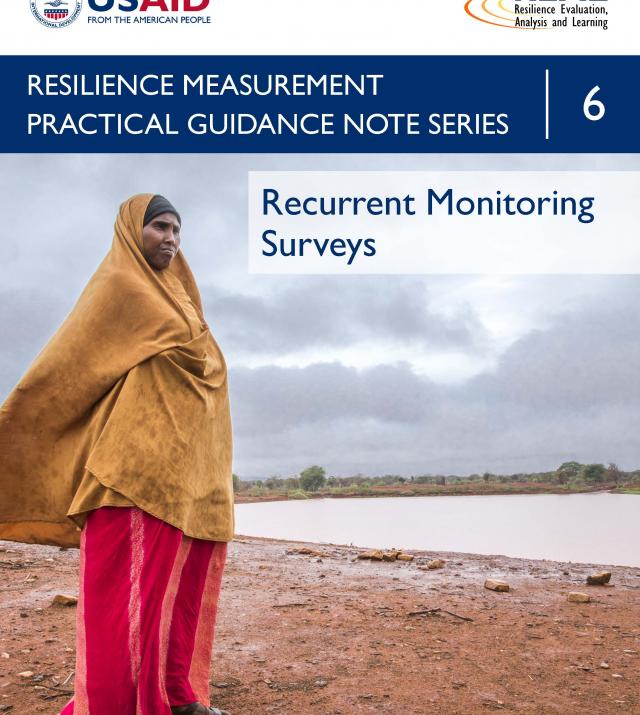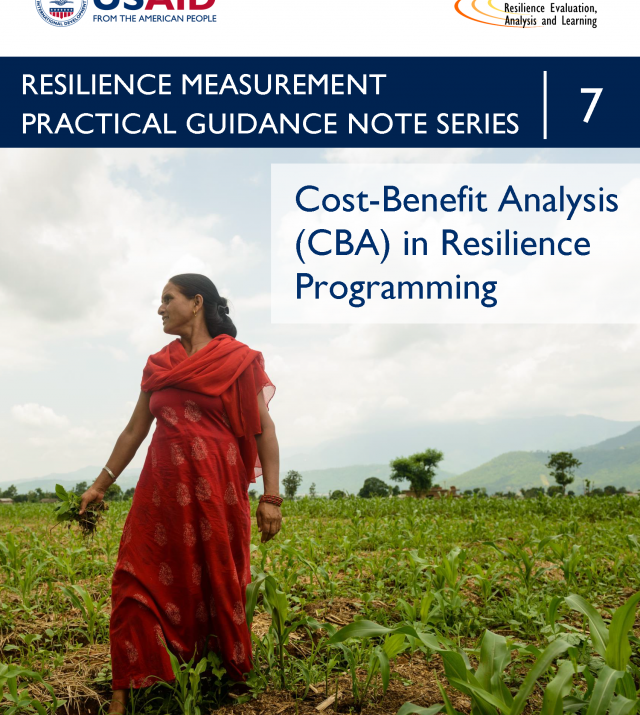
Resilience Measurement Practical Guidance Series: Guidance Note 5 – Design and Planning for Resilience Monitoring and Evaluation at the Activity Level

Resilience has emerged as a way to understand and address the increasing complexity and magnitude of risk in humanitarian and development contexts. Yet, the ability to develop strategies and programs that increase resilience requires robust measurement and analysis methods. The USAID Resilience Measurement Practical Guidance Note Series intends to provide new insights based on recent efforts to assess, analyze, monitor and evaluate resilience. The first guidance note in this series, Guidance Note No. 1 - Risk and Resilience Assessments, introduces resilience assessments and when, why and how to conduct them. The second, Guidance Note No. 2 - Measuring Shocks and Stresses, describes how to measure and analyze shocks and stresses, while Guidance Note No. 3 - Measuring Resilience Capacities details how to think about and measure absorptive, adaptive and transformative capacities. Guidance Note No. 4 - Resilience Analysis, describes the techniques used for conducting resilience analysis. This guidance note walks readers through the steps to be taken during the program cycle to plan for monitoring and evaluation - to better understand whether the resilience approach is contributing to households' and communities' ability to mitigate shocks and stresses.
Read more in the Resilience Measurement Practical Guidance Note Series. A series that synthesizes existing technical documents into pragmatic guidance to assist practitioners in integrating core aspects of resilience measurement into their program assessments, design, monitoring, evaluation, and learning. The series introduces key concepts and guides practitioners through the process of resilience measurement, from assessment to analysis.

